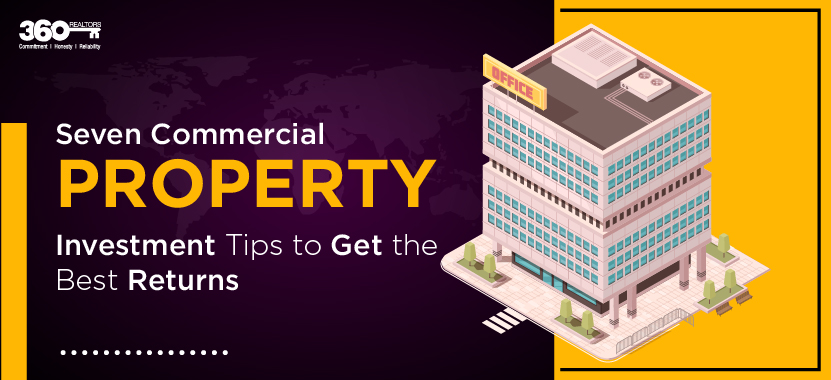Commercial Real Estate offers better rental & capital appreciation when compared to residential properties. In Indian metros average residential rental yields are to the tune of around 2-3%. In comparison, it is much higher in commercial properties - roughly to the tune of 4-5%. Likewise, capital appreciations are also higher in commercial properties. Hence, such properties make a great investment choice as they can ensure steady rental income alongside attractive ROIs through capital gains.
However, when compared to residential properties, it requires more research & homework before identifying the right commercial properties to bet your money on.
Mentioned below are seven key steps that can help a discerning investor to put their money into commercial Real Estate.
Understand the Location Dynamics
Just like residential Real Estate, commercial Real Estate is also location-dependent. A location with relatively fewer vacancy levels (less than 5%) can ensure higher rental returns. In such locations, tenants generally do not have many options to shift & hence landlords can command higher rentals. On the contrary, locations with high vacancy rates can give tenants plenty of options to switch thereby rental rates are adversely affected.
Learn Demand vs. Supply Trends
Investors should analyze the demand vs. supply dynamics carefully before making an investment choice. Higher demand than supply will ensure better rental rates. On the other hand, if the demand is less than the supply then the buildings will command lower rental rates.
Understanding the demand-supply pattern is also simple. Various leading property consultants such as Cushman & Wakefield (C&W), Colliers, JLL, etc. publish quarterly & annual reports on the various commercial markets. By going through the report, one can understand the historical annual demand & average expected supply over the next 2-3 years. This will give the discerning buyer a fair idea about the supply-demand dynamics.
Quality of Tenants
The quality of tenants also contributes towards increasing the value of the property. A good blue-chip MNC will also always pay the rent on time, give higher deposits & lease for higher time period. Thereby such tenants add tremendously to the value of the property. The same does not apply for smaller companies as there might be higher risk.
Quality of Buildings
There are numerous types of office buildings such as Class A+, A, B & C, etc. A better quality building will always attract high-caliber tenants, thereby ensuring higher rental returns & longer lease contracts. Even within the same location, the quality of building matters a lot.
Lease Structure
Commercial properties are leased on the basis of 3+3+3 or 5+5+5, indicating a 9 or 15 years lease period with escalation in every fixed time period – 3 or 5 years. Generally such leases are one-sided. This means the tenant can leave anytime but the landlord will have to wait for at least 3 (or 5 years). However, there are provisions to bring in lock-in periods, wherein a tenant cannot leave for a fixed period of time. Investors need to be careful while designing the lease structure. Generally the longer the lease structures, the better.
Deposits
Generally, the security deposits comprise of rentals for the 10 or 12 months. The larger the security deposits, the smaller the risk involved. A lot of times, a tenant would ask for smaller security deposits- (~ 6 months time period). However, this might be an alarming situation. A smaller time period of security deposit might be either due to cash flow issues in the company or the tenant might be looking at a short-term option.
Diversification
Like any other Real Estate or other financial investment option, commercial realty also calls for prudent diversification strategy to mitigate risk & maximize returns. Rather than putting all the eggs in just one basket, it is advisable to have multiple properties. In the case of just one property, it might become a little difficult if the tenant vacates. However, in case of multiple properties such risk can be managed easily.






